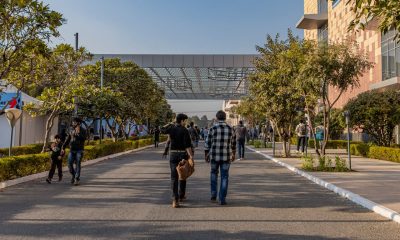Philippine News
The Philippines’ preparedness amid the super typhoon
Tens of thousands of Filipinos died when the monstrous super typhoon Yolanda (Haiyan) hit the Philippines.
But do we really know why and how this hell-ish disaster happened?
Here are some facts that could somewhat enlighten us:
- A killer storm like Haiyan has just gotten stronger over recent decades.
- Winds of 314 kph (195 mph) were followed by a surge of water, which rose to the height of a coconut tree within five minutes.
- Despite of Philippines’ hard-earned expertise in encountering typhoons and other natural disasters, it was still not enough to stop the super typhoon from ravaging the country as the local government didn’t realize how bad the storm would be.
- Philippines is an archipelago with millions of people living in low-lying areas, with houses built using substandard materials.
- In the Philippines, there is a greater tendency to push very large amounts of water on the land, leading to limited to no safe places to go.
- Easy-to-understand information was not relayed to the people.
- Temperatures in the Philippines rise by 0.14C a decade. Rising sea levels around the Philippines and a falling water table increase the occurrence of extreme weather events.
Were we really prepared?
Speaking as one of the Filipinos, grieving for the gigantic disaster that my country is currently facing, I also want to know, “Was the Philippines really prepared for such a storm surge?”
The International Federation of Red Cross and Red Crescent Societies predicted a “dangerous” typhoon with winds of 240 kph (150 mph) heading straight to Leyte and Samar, two days before the killer typhoon hit.
People in the mentioned areas were given adequate warnings and over 750,000 people across the central Philippines were evacuated.
Clare Nullis, spokeswoman for the UN’s World Meteorological Organization, commended the government for issuing warnings, explaining that the destruction could have been greater if not for the regular warnings.
PAGASA, the weather bureau of the Philippines had also sent out regular warnings of a seven-meter (22 ft) storm surge on an hourly basis. But the problem was making the people believe that they would be faced with a serious disaster, “Some people didn’t believe us because it was so sunny,” said Jerry Yaokasin, vice mayor of Tacloban. “Some people were even laughing.”
One survivor from Tacloban revealed that he would have evacuated if he had been told that a tsunami-like occurrence would likely to hit.
“On Thursday night we could see the stars in the sky,” said Moises Rosillo, 41, a pedicab driver. “We thought it would just be wind and rain.”
According to Doracie Zoleta-Nantes, an expert on disasters at the Australian National University in Canberra, local government units had failed to mobilize officials for forced evacuations to higher and safer ground.
While Lucille Sering, secretary of the government’s Climate Change Commission, believes that the government had likewise failed to prepare for the breakdown in local functions.
Over 30 countries have pledged support, but impassable roads have made it difficult for volunteers to distribute the relief goods in a quicker and more organized manner.
Local government officials who were also affected by the super typhoon could not attend to their tasks in order to facilitate a more efficient delivery of relief aids.
What could have been done?
According to some experts in disaster preparedness, the Philippines government must have labeled Yolanda (international name: Haiyan) as “the most serious possible emergency” to make it easier to convince people to leave their homes.
They added that it could have allowed the government to mobilize more resources prior to the expected storm landfall.
Some analysts also believe that evacuating thousands of people just a few hours before the landfall left authorities with very little time to place isolated or elderly people in a safer place.
Analysts could not help but compare Vietnam, a country with a GDP per capita of only $1,600 to Philippines who has a GDP per capita of around $2,600. According to an article published in Asia Unbound, when a strong storm hit Vietnam, the death toll was only 14 as its government announced an early emergency warning.
It also added that if compared to the buildings in the Philippines, Vietnam boasts of stronger buildings; proof of which were the buildings that didn’t easily collapse amid the storm.
The report blamed the corrupt Philippines officials why buildings and houses in the country frequently succumbed to natural disasters.
Some, if not most officials, received kickbacks from contractors, leading to the construction of establishments using substandard materials, the Asia Unbound report added.
Roberto Lilles, a successful architect cited the “traditional flimsy wood and tin-roof homes” as one of the reasons why houses were easily wrecked by super storms.
He said that such disasters could have been avoided if the government opted for low-cost, brick-and-mortar housing, “There is low-cost housing that can resist the storms. But most people in those rural areas are so poor, they still can’t afford them,” he explained.
The Aquino administration, after receiving such criticisms is firm that what Yolanda brought to the Philippines was something really unprecedented that no amount of preparations was enough to save thousands of lives.
After all that have been said, all that we can do now is to learn from this devastating experience; and from there, help our affected countrymen to bounce back from this nightmare.
Bangon Pilpinas! (Rise Philippines!)






















